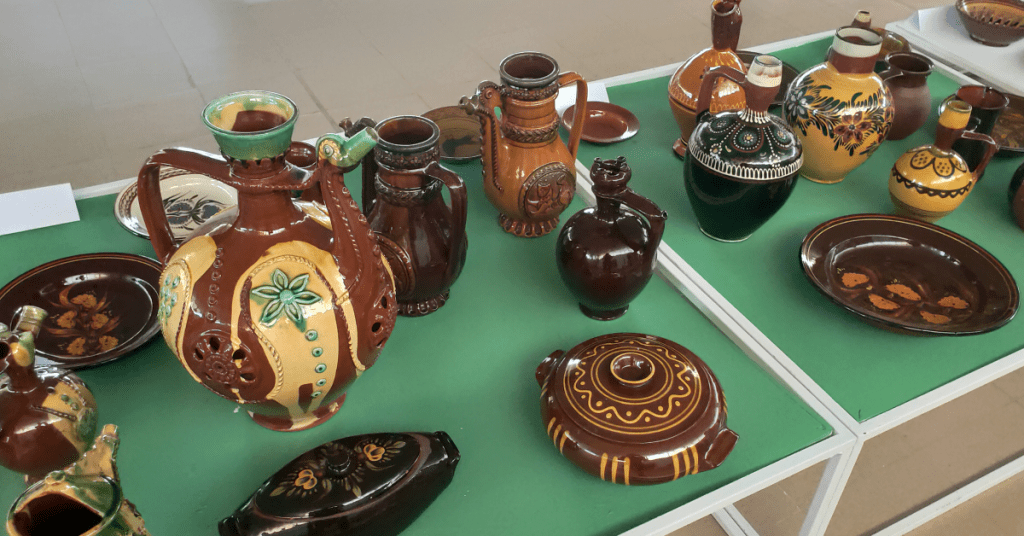The world premiere of Bulgarian arts and crafts in London in 1907
Imagine my surprise when I found out that Bulgaria took part in a Balkan States exhibition at Earl’s Court in London some 117 years ago. This was a significant opportunity for a liberated and independent Bulgarian state to showcase the best of its’ industries, public and private sector initiatives, arts, and crafts. All items were beautifully curated and split into display rooms.
The first of them was dedicated to “Education”. Bulgarian schools presented some of the amazing work done by their students in various fields, for example, silk weaving in Vratsa, furniture making in Ruse, and wool weaving in Sliven. The second room was focused on “Fine arts”, for example, oil paintings on canvas, watercolor painting, frescos for tapestry, and porcelain.
Next, there was a room including models of carriages and light wagonettes produced by Mito Orozov in his factory in Vratsa. The popular rose oil was also on display including a photograph of the Rose Valley plantations in Kazanluk, Central Bulgaria. A full-scale distillery demonstrated the process of turning the flower petals into fragrant rose oil. In a room dedicated to decoration, visitors could see carpets from Kotel and Chiprovtsi, ceramic art, and pottery from Troyan and Trun.
Century-old traditions are still alive
We organised a family visit to Oreshak, near Troyan last year in September. It was the 30th anniversary of the Plum Festival. Troyan and the area are known for their plum orchards and the subsequent production of plum brandy and plum marmalade. Oreshak is home to a permanent Exhibition of Arts and Crafts. The site comprises several exhibition halls, starting with Pottery Hall, Textiles Hall, International Applied Arts Hall, and Woodcarving Hall. The entire complex is located on a 50-acre park and its collection represents all ethnographic regions of Bulgaria.
https://www.fairoreshakbg.com/

Busintsi and traditional pottery
The village of Busintsi near Trun is famous for its pottery. Clay is locally sourced as there are rich deposits in the vicinity. Towards the end of the 17th century, there were 300 craft potters. Nearly every house in the village had a pottery wheel. Pottery made in Busintsi has the typical yellow, green, and red colours. Also traditional are the horizontal and vertical lines, and decorative drawings of leaves.
Most of the ceramics have a very practical purpose. These are items used in everyday life, such as vessels for storing and carrying food, water, and wine, and even much larger items such as water pipes. Petar Gigov is a popular master craftsman and founder of the Museum of Ceramics in Busintsi. His work is on display in the Louvre in Paris and the British Museum in London.
https://www.britishmuseum.org/collection/
Chiprovtsi and traditional carpets
Carpet-making in the town of Chiprovtsi is a craft with a centuries-old tradition. Here, carpets are made using the ancient technique of weaving on a vertical loom. Originally, they were made of wool, and from the first decades of the 20th century, they were woven with a cotton base and a woolen weft. The yarn for the carpets is dyed with natural dyes, giving durability and extraordinary softness and warmth to the tones.
Back in the day, there was a loom in every house in Chiprovtsi, and the majority of the girls were trained as weavers. Carpets produced here are easily recognisable by their geometric patterns. Some carpets feature a grapevine, while others feature female figures in a criss-cross pattern. More often than not, they are made up of a main field framed by one or several borders.
Carpets worthy of royal approval
The small town of Kostandovo in Bulgaria came recently under the spotlight. Nino Parbulov and his carpet factory operate the largest loom in Europe, an impressive 8-meters wide. If you are not yet convinced, wait to hear this. As recently as 2022, the British royal family commissioned two large carpets for their residence in the UK. Because of their quality, Bulgarian carpets were a favourite of Queen Elizabeth II and now her successor King Charles. 30 women, who live locally, help weave carpets using traditional techniques that date back 2000 years. It is what draws the attention of the British royal family and what they appreciate the most.
Do you want to know more about Bulgaria? There are 7 popular Bulgarian food and drinks.






